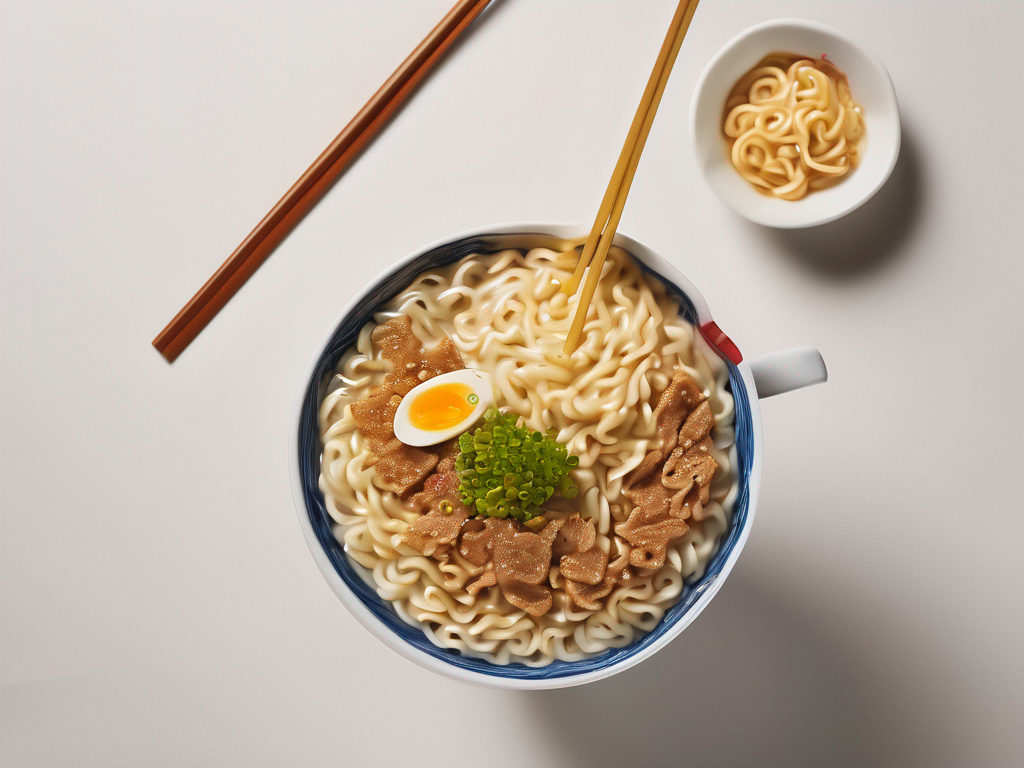
Signs that Your Cup Noodles Have Gone Bad
Get Your Free Food Safety Cheat Sheet
30 most common foods with instant answers. Print it and stick it on your fridge—completely free!
Signs that Your Cup Noodles Have Gone Bad
Cup noodles are a convenient and popular snack or meal option for many people. Whether you enjoy them at work, school, or at home, it's essential to ensure that your cup noodles are safe to eat. Like any other food product, cup noodles can go bad if not stored or handled properly. In this blog post, we will discuss the signs that your cup noodles may have gone bad and what you should look out for to prevent foodborne illnesses. (Cup noodles)
Understanding Expiration Dates
Before we delve into the signs that your cup noodles have gone bad, it's important to understand how expiration dates work. Cup noodles typically come with a "best by" or "use by" date stamped on the packaging. While these dates are good guidelines to follow, they are not strict deadlines. In most cases, cup noodles are safe to consume even after the expiration date as long as they have been stored properly.
Signs Your Cup Noodles Have Gone Bad
1. Unpleasant Odor
- Rancid Smell: If your cup noodles emit a foul or rancid odor, it is a clear sign that they have gone bad. Trust your sense of smell and discard the noodles if they smell off.
2. Changes in Appearance
- Mold or Discoloration: Any signs of mold growth or unusual discoloration on the noodles or in the broth indicate spoilage. Mold can be harmful if consumed, so it's crucial to discard the cup noodles immediately.
3. Texture Changes
- Slimy or Sliminess: If the noodles feel slimy or have a slippery texture, it's a sign of bacterial growth. Bacteria can thrive in moist environments, so avoid consuming cup noodles with a slimy texture.
4. Tasting Off
- Off Taste: If your cup noodles taste different than usual or have a strange flavor, it's best to stop eating them. A funky taste can indicate spoilage or contamination.
5. Expired Date
- Check the Expiration Date: While expiration dates are not always strict deadlines, if your cup noodles are significantly past the expiration date and show other signs of spoilage, it's safer to discard them.
Proper Storage Tips to Extend Shelf Life
To ensure that your cup noodles stay fresh and safe to eat for longer, here are some practical storage tips:
1. Store in a Cool, Dry Place
- Keep your cup noodles in a cool, dry place away from direct sunlight and moisture. Exposure to heat and humidity can accelerate spoilage.
2. Check the Packaging
- Inspect the cup noodles' packaging for any tears, punctures, or damage that could compromise their shelf life. Damaged packaging can lead to contamination.
3. Follow Instructions
- Always follow the preparation instructions on the cup noodles' packaging to ensure they are cooked thoroughly and safely.
4. Use Clean Utensils
- When preparing your cup noodles, make sure to use clean utensils and wash your hands before handling the food to prevent contamination.
Conclusion
In conclusion, it's crucial to be vigilant and mindful of the signs that your cup noodles may have gone bad. By understanding these indicators and following proper storage and handling practices, you can enjoy your cup noodles safely. Remember to trust your senses when it comes to food safety and never hesitate to discard any food that shows signs of spoilage. Stay informed, stay safe, and enjoy your cup noodles responsibly.
By being aware of the signs of spoilage and following proper storage practices, you can ensure that your cup noodles are safe to eat and enjoy. Remember to check for unpleasant odors, changes in appearance, texture, taste, and expiration dates to make informed decisions about the freshness of your cup noodles. Happy eating!
[Learn more about cup noodles](/food/cup noodles) (Cup noodles)
Authoritative Food Safety References
These agencies and university labs inform every tip and health precaution we publish.
USDA FoodKeeper – Cold Storage Guidelines
Official refrigerator, freezer, and pantry timelines maintained by the U.S. Department of Agriculture.
Visit USDA FoodKeeperFDA Produce Safety Rule & Grower Guidance
Field-to-fridge handling practices that prevent contamination of fruits, vegetables, and leafy greens.
Visit FDA Produce SafetyCDC Foodborne Illness Prevention Hub
Surveillance-backed guidance on pathogens, symptoms, and steps to reduce foodborne illness risk.
Visit CDC Food SafetyUC Davis Postharvest Technology Center
University research detailing optimal storage atmospheres for produce after harvest.
Visit UC Davis PostharvestPenn State Extension – Home Food Preservation & Safety
Peer-reviewed extension bulletins on safe canning, chilling, and reheating practices.
Visit Penn State ExtensionGet Your Free Food Safety Cheat Sheet
30 most common foods with instant answers. Print it and stick it on your fridge—completely free! Want more? Upgrade to the complete guide with 70+ foods.
Scan your food directly and get instant safety info using our AI-powered camera feature.